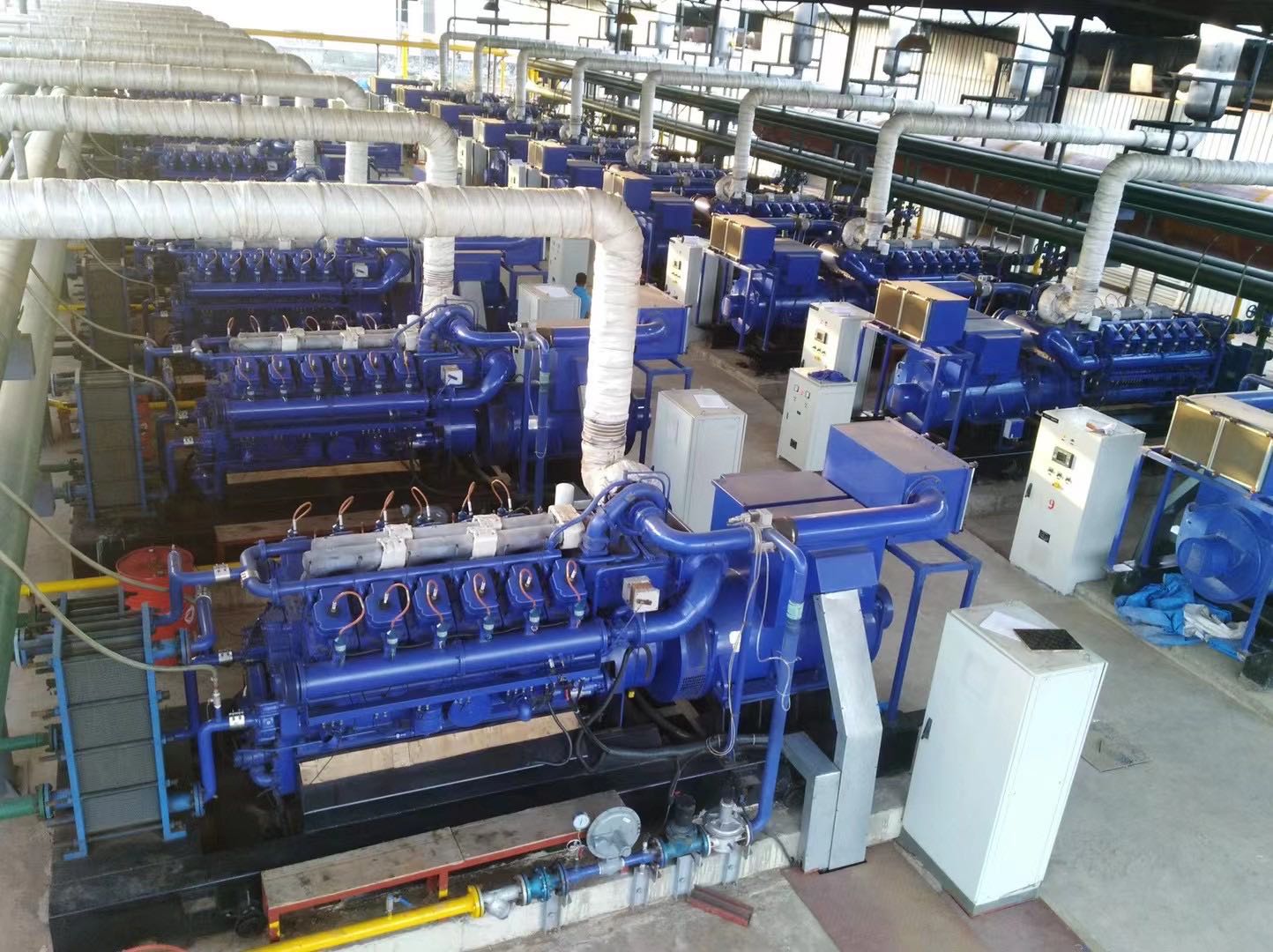 联系 - 热线
联系 - 热线
0531-69953988

 联系 - 热线
联系 - 热线
发电机组的基本组成与作用
发电机组由动力系统、控制系统、发电机本体、以及辅助系统组成。这些组件协同工作,将机械能转化为电能,以满足各种电力需求。具体如下:
The generator set consists of a power system, a control system, a generator body, and auxiliary systems. These components work together to convert mechanical energy into electrical energy to meet various power demands. Specifically, as follows:
动力系统
dynamic system
发动机:发电机组的动力来源,通常包括柴油机、汽油机、水轮机或风力涡轮机等。发动机的作用是将燃料的化学能转化为机械能,驱动发电机转动。
Engine: The power source of a generator set, usually including diesel engines, gasoline engines, water turbines, or wind turbines. The function of an engine is to convert the chemical energy of fuel into mechanical energy, driving the generator to rotate.
燃烧系统:在柴油发电机组中,经过空气滤清器过滤后的空气与高压雾化柴油充分混合,压缩后点燃,产生高温高压气体推动活塞作功。
Combustion system: In a diesel generator set, the air filtered by an air filter is fully mixed with high-pressure atomized diesel, compressed and ignited, producing high-temperature and high-pressure gas to drive the piston to work.
控制系统
Control system
控制模块:用于监测和调整发电机组的运行状态,包括电压调节器、频率调节器和保护装置等。控制系统确保发电机在安全范围内稳定运行。

Control module: used to monitor and adjust the operating status of the generator set, including voltage regulators, frequency regulators, and protective devices. The control system ensures stable operation of the generator within a safe range.
传感器和执行器:传感器负责检测温度、压力、电流等参数,执行器则根据控制指令调节燃油供应、励磁电流等,以维持发电机的稳定输出。
Sensors and actuators: Sensors are responsible for detecting parameters such as temperature, pressure, and current, while actuators adjust fuel supply, excitation current, etc. according to control instructions to maintain stable output of the generator.
发电机本体
Generator body
转子:由导体线圈和磁极组成,当外力带动其旋转时,导体切割磁力线产生感应电动势。转子是发电机产生电能的核心部件。
Rotor: Composed of a conductor coil and magnetic poles, when it is driven to rotate by external force, the conductor cuts the magnetic field lines and generates induced electromotive force. The rotor is the core component of a generator that generates electrical energy.
定子:由导线绕成的线圈固定在机壳内,当转子磁场变化时,定子线圈中产生感应电流,形成交流电输出。
Stator: A coil formed by winding wires is fixed inside the casing. When the rotor magnetic field changes, an induced current is generated in the stator coil, forming an alternating current output.
励磁系统:提供恒定磁场激励转子产生电流,包括励磁电源、励磁线圈和调节装置。
Excitation system: Provides a constant magnetic field to excite the rotor and generate current, including excitation power supply, excitation coil, and regulating device.
辅助系统
Auxiliary system
排气系统:用于排放发动机燃烧产生的废气,并降低噪音和环境污染。例如,许多现代发电机组都配备有消音器和高效过滤器。
Exhaust system: used to exhaust the exhaust gas generated by engine combustion and reduce noise and environmental pollution. For example, many modern generator sets are equipped with mufflers and high-efficiency filters.
冷却系统:通过散热器和风扇等部件,带走发动机和发电机在运行过程中产生的热量,保持设备在合理温度范围内工作。
Cooling system: It removes the heat generated by the engine and generator during operation through components such as radiators and fans, and keeps the equipment operating within a reasonable temperature range.
减震系统:减少设备运行时的振动和噪音,提高稳定性和使用寿命。
Shock absorption system: reduces vibration and noise during equipment operation, improves stability and service life.
电气系统:包括蓄电池、充电器、配电盘等,为发电机组提供启动电流和稳定电力输出。
Electrical system: including batteries, chargers, distribution panels, etc., providing starting current and stable power output for the generator set.
应用分类
Application classification
按动力来源分类:柴油发电机组、燃气发电机组、风力发电机组、水力发电机组等。
Classified by power source: diesel generator set, gas generator set, wind turbine generator set, hydroelectric generator set, etc.
按电能转换方式分类:交流发电机(同步发电机、异步发电机)、直流发电机。
Classified by energy conversion method: AC generator (synchronous generator, asynchronous generator), DC generator.
按用途分类:固定式发电机组(用于连续供电)、移动式发电机组(适用于临时供电)等。
Classified by purpose: fixed generator sets (for continuous power supply), mobile generator sets (suitable for temporary power supply), etc.
综上所述,发电机组是一个复杂的机械设备组合,通过多个系统的协同工作将机械能转化为电能。其广泛应用于工农业生产、国防、科技及日常生活中,为各种用电设备提供可靠的电力支持。在选择和使用发电机组时,应根据具体需求选择合适的类型和配置,并定期进行维护检查,以确保设备的正常运行和延长使用寿命。
In summary, a generator set is a complex combination of mechanical equipment that converts mechanical energy into electrical energy through the collaborative work of multiple systems. It is widely used in industrial and agricultural production, national defense, technology, and daily life, providing reliable power support for various electrical equipment. When selecting and using generator sets, appropriate types and configurations should be chosen according to specific needs, and regular maintenance checks should be conducted to ensure the normal operation of the equipment and extend its service life.
业务分类
Business classification产品推荐
product recommendation联系方式
Contact Information

截屏,微信识别二维码